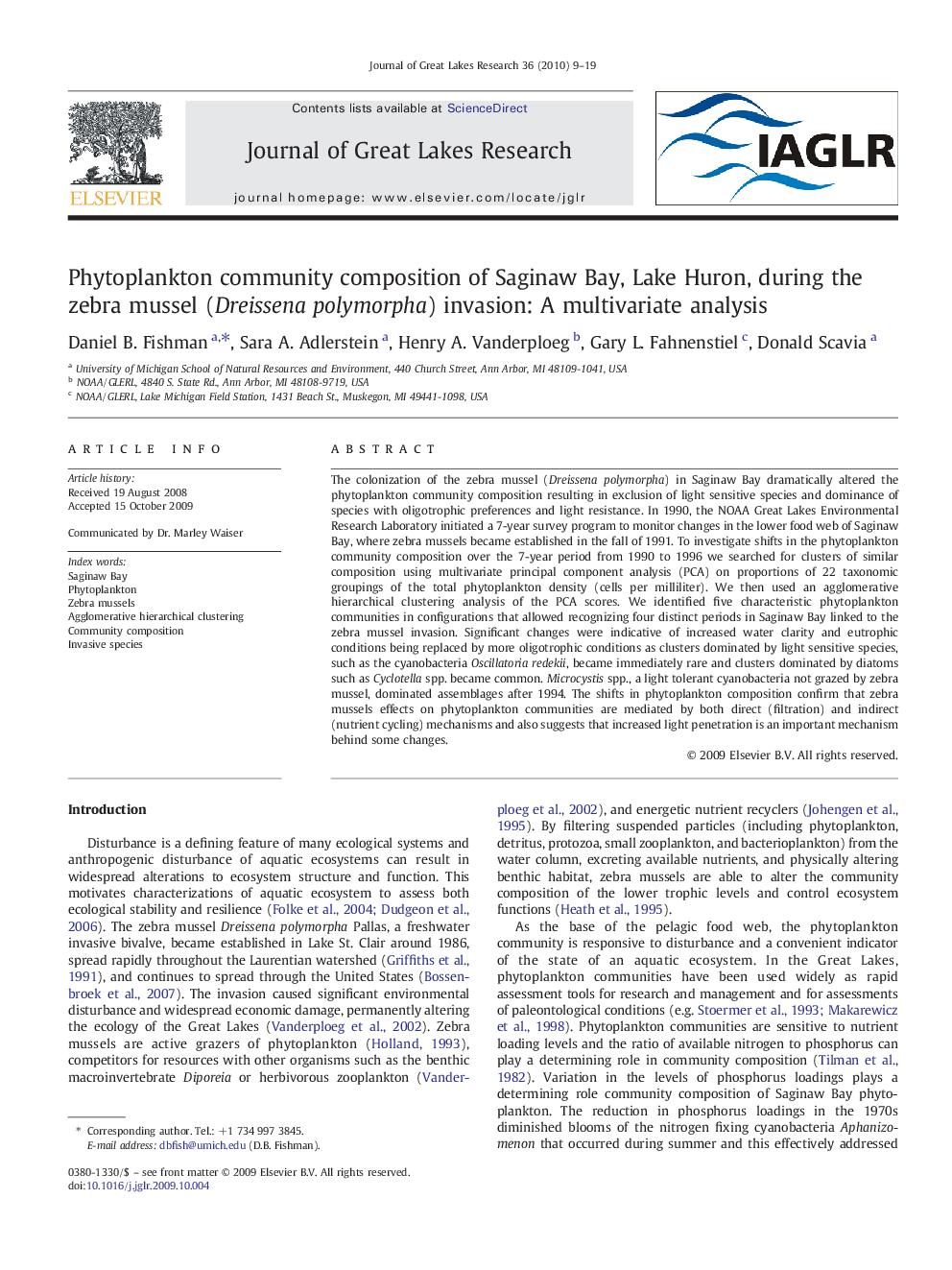| Article ID | Journal | Published Year | Pages | File Type |
|---|---|---|---|---|
| 4399038 | Journal of Great Lakes Research | 2010 | 11 Pages |
The colonization of the zebra mussel (Dreissena polymorpha) in Saginaw Bay dramatically altered the phytoplankton community composition resulting in exclusion of light sensitive species and dominance of species with oligotrophic preferences and light resistance. In 1990, the NOAA Great Lakes Environmental Research Laboratory initiated a 7-year survey program to monitor changes in the lower food web of Saginaw Bay, where zebra mussels became established in the fall of 1991. To investigate shifts in the phytoplankton community composition over the 7-year period from 1990 to 1996 we searched for clusters of similar composition using multivariate principal component analysis (PCA) on proportions of 22 taxonomic groupings of the total phytoplankton density (cells per milliliter). We then used an agglomerative hierarchical clustering analysis of the PCA scores. We identified five characteristic phytoplankton communities in configurations that allowed recognizing four distinct periods in Saginaw Bay linked to the zebra mussel invasion. Significant changes were indicative of increased water clarity and eutrophic conditions being replaced by more oligotrophic conditions as clusters dominated by light sensitive species, such as the cyanobacteria Oscillatoria redekii, became immediately rare and clusters dominated by diatoms such as Cyclotella spp. became common. Microcystis spp., a light tolerant cyanobacteria not grazed by zebra mussel, dominated assemblages after 1994. The shifts in phytoplankton composition confirm that zebra mussels effects on phytoplankton communities are mediated by both direct (filtration) and indirect (nutrient cycling) mechanisms and also suggests that increased light penetration is an important mechanism behind some changes.
